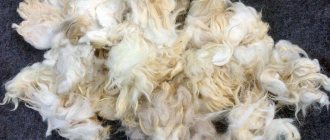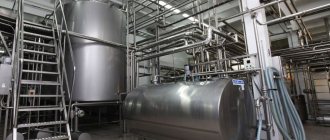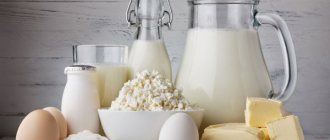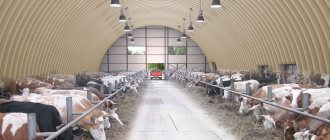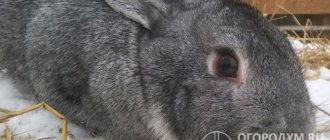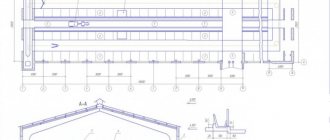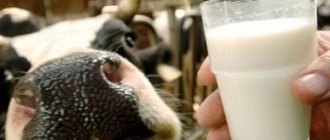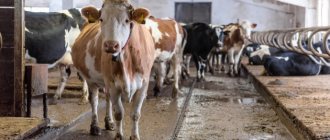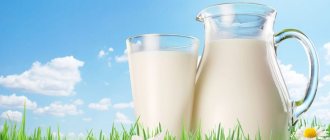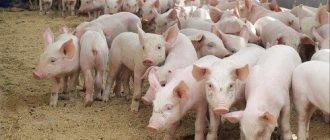Nowadays, such a form of private entrepreneurship as cattle breeding is very popular. Mini-farms are common, which are small complexes for maintaining a herd of approximately 20-100 cows. On such a farm you can keep farm animals to produce milk and meat. However, the first step to starting a profitable business is setting up a farm.
What building materials and tools are needed?
First of all, it is necessary to decide what building materials to use for the construction of the barn, since this determines: how quickly the construction will take place, how reliable and durable the structure will be, and how comfortable the animals will be in it.
Buildings in the construction of which concrete was used did not justify their worth, since they have increased thermal conductivity. During the summer months, it is very hot in such a barn, and during the cold season the heat does not stay inside the building. The use of wood is more expedient, since this material has low thermal conductivity. Although there are some disadvantages: the material is fragile, fire hazardous, the boards can rot, and their cost is quite high.
Brick is successfully used in the construction of mini-farms. This building material is capable of excellent heat retention and excellent protection from outside noise.
It is not advisable to use bricks for the construction of a large complex for keeping cows. In this case, it is better to use modern SIP panels (sandwich panels consisting of slabs with insulation between them). This building material is characterized by quick construction, relatively low cost, and excellent thermal insulation.
Animal nutrition
Productive breeds of bulls produce a ratio of meat to total slaughter weight of at least 70%. Achieving such results is not easy; intensive feeding with the help of special diets is required.
It is impossible to ensure high performance with hay and fresh grass alone, therefore, supplements of the following products are necessary:
- stern beet;
- boiled and crushed potatoes with carrots;
- grain crops;
- salt;
- food waste from canteens.
At the same time, the basis of the diet is still hay and fresh grass (in summer). Animals must be on pasture for at least 15 hours a day to have enough time for abundant feeding.
Phased construction: drawing
Before construction begins, there are some steps that need to be taken. Any structure needs calculation and planning. First you need to create a detailed project diagram based on all available data. Then, according to the plan, the building materials and costs required for construction are calculated. A well-executed preparation phase greatly facilitates construction. After this, you can begin to choose the location where the building will be located. It must meet some requirements:
- The distance to residential buildings must be at least 15 m.
- The well or borehole must be located more than 20 meters away.
Made of brick, adobe
Adobe (raw brick) is made from a mixture of clay, straw and sand. The most budget option for construction, because its components can be found in any household. Building a barn with bricks is profitable, but often expensive, and not everyone can afford it. However, during construction they try, if possible, to make the floor or walls of brick. It is durable, strong, and can protect against frost and fire. Brick flooring is warmer than concrete and more stable than wood. The minimum service life of a brick floor is 10 years. In areas with low temperatures during construction, brick walls must be laid out in two rows with insulation laid between them. This significantly increases construction costs.
From sandwich panels
Sandwich panels have lower conductivity than brick. The protective coating of the panels increases resistance to aggressive environments, which extends their service life. If you have a ready-made foundation, a barn made of sandwich panels can be assembled by a couple of workers in a few weeks. Windows in such a structure are also made of this material. The panels are lined on both sides with treated steel, which can be painted if necessary.
An example of a barn construction diagram.
Do-it-yourself prefabricated
Prefabricated barns are manufactured according to special drawings. The longest stage of such construction is the assembly of the finished structure. It may take two to three months. This type of barn is distinguished by its special appearance, durability and strength. Sandwich panels or sheet steel are usually used for external and internal cladding. The material is additionally treated with a special compound to prevent corrosion. With proper design, such barns can increase labor productivity.
You can learn about rubber mats for cattle here.
Adviсe
Several recommendations from experts for more competent construction of a barn for 10 animals.
Carefully select a location for your future structure
It is important that the smells of manure do not reach the house, so it is better to build a barn at some distance from residential buildings
The barn should be no less than 15 meters away from the house: this distance is provided for by building codes, and fits well into the area of ordinary land plots. It will be great if you dig a well with clean, potable water near the barn. This proximity will provide the cows with the liquid they need and will make maintenance of the barn more convenient.
If the soil on the site is loose, then the foundation must be deepened further to give the building the necessary stability. The minimum depth of the foundation is 50-70 cm. Along the perimeter of the building from the outside, it is necessary to make a concrete or asphalt blind area to protect the base of the barn from moisture penetration.
The video shows tips on building a barn:
It is better to make the floor at a slope of 2-3 cm so that liquid waste can naturally flow into the designated areas. It is recommended to make the floor itself adobe with plank flooring: this is an environmentally friendly, warm, and durable option.
Be sure to provide sufficient lighting, which should work at night. In a 10-head barn, ventilation is also important. This necessary communication must be provided when constructing the roof.
Summary:
1. investments - 5,585,000 rubles.
2. payback period – 32 months.
3. average monthly profit - 176,666 rubles.
Sources
- https://business-poisk.com/biznes-plan-molochnoj-fermy.html
- https://to-biz.ru/kak-otkryt-molochnuyu-fermu/
- https://vipidei.com/proizvodstvo/vyrashhivanie/otkrytie-molochnoj-fermy/
- https://agrobuilding.com/objects/livestock/barn/stroitelstvo-molochnoj-fermy-investitsii-i-okupaemost
- https://biznesovo.ru/biznes-plany/biznes-plan-molochnoj-fermy
- https://www.beboss.ru/bplans/185-biznes-plan-molochnoy-fermy-na-100-golov
- https://Proekt-sam.ru/proektzdanii/proekt-mini-fermy.html
- https://pokras-stroy.ru/ferma-dlya-krs-na-50-golov
- https://pokras-stroy.ru/stroitelstvo-molochnoy-fermy
- https://mirfermera.ru/688-tipovoy-proekt-korovnika-na-50-golov.html
- https://molferma.com/sozdanie_mol_fermi/stroitel-stvo-sovremennoj-molochnoj-fermy-kak-postroit-korovnik.html
- https://pokras-stroy.ru/kozya-ferms-na-50-koz
- https://BusinessXXL.ru/molochnaya-ferma/
Choosing the right place
To build a farm for cows without any problems, you need to choose the right piece of land. This should be a flat and well-trodden area. The presence of a small forest belt near the mini-farm will protect animals from drafts and/or strong winds.
Natural reservoirs and/or sources of drinking water, according to the legal norms of the relevant laws of the Russian Federation, must be at least 30 m away from places where mass livestock are kept, otherwise the owner may be fined a large amount. In this case, the mini-farm will have to be moved to another site.
An equally important point is the absence of residential and/or other buildings near the place where the mini-farm will be set up, cattle - this is an inevitable unpleasant smell. You should not create discomfort for residents of nearby settlements. On its own site, a mini-farm for cows is set up closer to the place where fruit and vegetable crops are planted. This will make it easier to use manure to fertilize the soil. A modern farm should be located at a distance of 15 meters or more from a residential building. Additionally, the main wind direction in the region should also be taken into account.
To build a farm for cows without any problems, you need to choose the right piece of land
How to organize a walk in the pasture?
To increase the milk productivity of the herd, grazing of livestock on pasture in combination with physical activity and the inclusion of green fresh vegetation in the diet plays an important role. To fulfill these conditions, it is necessary to organize a walking area for the cows.
Each herd should be allocated a separate area, located close to the farm and a water source. If the pasture is located more than 2 km from the farm, a summer camp needs to be set up, where the camp needs to be fenced off and a temporary utility building built.
Fences must be built around the pasture. Water in a nearby reservoir must be tested to ensure it meets existing health standards. Animals should be grazed daily for 8-10 hours. When the vegetation on the pasture territory is reduced by half, the herd must be moved to another meadow.
A dairy livestock farm is an enterprise with a full production cycle. So in the process of building such a farm, you need to pay attention not only to building materials, but also to the correctness of the design. It should be remembered that only if all requirements for keeping livestock are met, the milk yield of cows can be increased and, as a result, the profit of the farm can be increased.
Why build a barn
The answer to this question is quite obvious, but we will voice it anyway. The main purpose of the barn is to create suitable conditions for keeping livestock.
As a rule, cowsheds are built at large specialized enterprises and farms, since they are not particularly needed in other domestic situations.
The easiest way is to hire workers to do the work for a certain amount. Do-it-yourself construction can be cheaper and help save money, but at the same time it will require more effort and time.
Based on this, it’s worth starting by prioritizing and deciding what is more important: money or your own strength. If you are firmly convinced that money is still more important, you can safely start planning.
How to choose materials for building a barn
First of all, you need to take care of materials for construction. Now we will present several options and list their advantages and disadvantages:
- Concrete.
- Tree.
- Brick.
- Sandwich panels.
- Slag blocks.
Concrete was traditionally used in the construction of cowsheds back in Soviet times, which, as it became known in practice, was a big mistake. The problem is concrete's high thermal conductivity - its ability to conduct heat.
Because of this key property of building materials, heat quickly leaves the building in winter, and in summer, on the contrary, it easily penetrates inside, and this creates extremely uncomfortable conditions.
It is worth adding that the premises are poorly ventilated in winter, creating good conditions for the emergence of bacteria leading to various diseases of livestock. This problem cannot be solved simply by opening windows and doors more often, because frosty air will also negatively affect the health of animals.
Unlike concrete, wood has low thermal conductivity and retains heat much better. There were also some shortcomings here, so wood was considered a good material, but short-lived. This is explained by the fact that the most trivial fire can easily destroy a wooden building.
It is also prone to rotting, but time and experience have shown that with a properly organized ventilation system, this, like other troubles, will not threaten you. The main thing is to carefully control the humidity level and follow basic rules.
Brick has gained the greatest popularity as a building material, which has been used for many years in countries located in temperate climate zones. A brick barn will be guaranteed to be strong and will serve you for a long time.
Sandwich panels have good competitiveness, although they are not as well known as the materials listed above. They appeared not so long ago, but have already proven themselves to be durable. Sandwich panels are advantageous as building materials because buildings made from them can be erected quickly and easily—two weeks is enough.
But we have not yet answered the main question - by what criteria to choose building materials? This question is directly related to the purpose of the building. We have already figured out the purpose of the barn - keeping cattle. In this case, one of the most important criteria will be thermal conductivity, because the temperature in the room and the well-being of the animals depend on it.
Designing a Cow Barn
Construction starts with drawing up a plan. Adhering to the requirements and advice, you should draw a floor plan and try to detail it as much as possible, not forgetting such important nuances as the ventilation system.
If you don't have any special requirements, a quality plan can be found online. However, it is recommended to do this yourself, adapting to the terrain.
The value of the plan when building a 20-head barn with your own hands is that this is a serious and quite large-scale project, and it should be approached with all responsibility.
It’s worth starting with calculating the area. You can take the size of the stable according to standards as a basis. In addition, you need to rely on the fact that an adult requires about twenty cubic meters, and a young one - ten.
There are a few other aspects to consider:
- food storage space;
- location of relevant equipment.
Where to get money
If we consider the farm as a business, then the most win-win option is to save money, but it is also the most difficult to implement. Not everyone is able to save, plus saving requires time and decent work, and this is where problems most often arise.
The banking sector is now willing to provide loans for the development of livestock and agriculture. But here you find yourself in bondage to the bank for at least 5 years. The advantages of this option are obvious, but in the event of force majeure, such as an epidemic on a farm or an increase in feed prices, you are at great risk.
You can try to find a wealthy partner and share the business with him. A person invests money in a farm, and you take care of all the issues from choosing a plot to selling the goods. When there is a stable profit, the partner receives constant passive income, and you receive a business with serious prospects for growth.
And finally, you can try to take money from the state. Every year, young entrepreneurs are given preferential interest-free loans for the development of promising projects. A mini-farm is considered a promising area and by correctly drawing up a business plan, you have a real chance to get this money.
How to keep livestock using the tether method
The economic farmer takes care of his livestock. If you use the untethered method in a hangar, then the building should:
- connect to the water supply and electrical network;
- maintain special equipment that monitors the well-being of animals and the indoor microclimate;
- be with an area of at least 1000 m²;
- the height of the room must be above 6 m;
- for 50 cows, the size of the hangar should be 15x70 m.
Important! It is worth considering which products will predominate: dairy or meat. With the free-stall method of obtaining milk, when cows have free access to the feeder and can also walk, milking is done in a special room
The main technology for collecting milk is carried out in:
With the free-stall method of obtaining milk, when cows have free access to the feeder and can also walk, milking is done in a special room. The main technology for collecting milk is carried out in:
- boxing;
- combibox;
- on deep litter that does not change.
The advantages include:
- high efficiency;
- improved working conditions;
- good handling of livestock.
Of the minuses:
- animals become just a herd, without nicknames;
- they fight for food and water;
- the amount of feed consumed increases;
- Additional requirements apply to animals.
Additional Information! A dedicated milking parlor uses either a herringbone or tandem approach. The length of the milk pipeline is reduced by 5 times, which improves the quality of the dairy product and also provides the required sanitary care.
To keep cows free-stall, the following conditions must be met:
- ensure separate maintenance of livestock;
- eliminate the disorderly movement of milked and unmilked cows;
- ensure the passage of milked animals to the paddock or to the feeding trough.
This method guarantees an increase in milk yield and faster weight gain for animals. The cattle stands in its own compartment, which has an area of up to 2.5 m². Here she lies, relieves her natural needs, and has access to a feeding trough. Almost all large farms use this method.
The disadvantage is the need to increase the labor force to feed the animals, clean up after them, as well as veterinarians to monitor the health of the animal, since chronic diseases develop in sedentary cattle.
Pros:
- animals do not collide and are not injured;
- each animal receives as much feed as it needs, the stronger animal does not eat the weaker;
- feed consumption is reduced by 10%, which is beneficial for the farmer;
- It is easier for veterinarians to monitor each animal;
- the cow produces 20% more milk, and the calf gains weight 15% faster;
- milking cows is easier.
Note! If you build stalls in a barn correctly, urine and manure will flow outside the barn. There is a standard way of milking in a special milking parlor
In this case, the cows have an automatic tether, but it can also be semi-automatic. This doubles the productivity of milk production
There is a standard way of milking in a special milking parlor. In this case, the cows have an automatic tether, but it can also be semi-automatic. This doubles the productivity of milk production.
Note! In addition, the cows pass through the wash, which ensures the purity of the product.
Distinctive features of free-stall farms
Although many dairy farms use tether housing, today farmers are increasingly switching to free-stall systems. In such a situation, the cow is in a separate box, which is an area fenced on three sides with a floor raised in relation to the passage by 15-20 cm. On such a farm, there are boxes where cows rest, combined boxes with containers for feed, and specially equipped platforms for milking.
The animals themselves approach the food containers. Feces are removed from the passage by a wheeled tractor equipped with a bulldozer shovel. The advantage of untethered technology is higher worker productivity. This is possible thanks to group housing of livestock, saving time and the use of equipment for automatic feed distribution and water supply, and automatic milking.
Equipment and interior design
It is important not only to build a barn correctly, but also to carefully consider its internal arrangement (Figure 4). To maintain livestock productivity, you need to draw up a plan for the location of animals in advance so that there is enough space for the entire livestock
In addition, the interior of the building must be properly treated to prevent animals from suffering from mold, mildew, or drafts.
If we talk about the general rules for the internal arrangement of a barn for 50 heads, then the main nuances will be as follows:
- The size of the stall for one adult should be 1.7 * 1.1 meters. However, if you plan to keep cows with calves, the area of one compartment needs to be increased.
- It is better to make the floor wooden, since the concrete surface is too cold and can cause colds in cows. It is advisable to use sawdust or straw as bedding, and this covering should be changed regularly as it gets wet.
- A chute is installed at the rear of each stall to drain slurry. It should be built in such a way that the gutter has a slight slope towards the collector or cesspool. This will make your work easier, since the waste products of livestock will gradually flow into the pit. At the point where the chute exits the barn, a small opening is made in the wall and covered with a valve.
- In the front part of the stall there is a feeder and a drinker. The simplest model of a feeder is a trough with sides. Such a product can be easily made with your own hands from planed and sanded boards.
- If you plan to keep cows and calves together, next to each stall you need to build a small compartment or cage in which the young animals will be kept.
Compliance of the internal space with sanitary and hygienic standards also plays an important role in maintaining the health and productivity of cattle. The problem is that pathogenic microorganisms actively develop in the barn environment. To prevent this, you need to regularly clean the premises, remove residual manure from gutters and change the litter. In addition, immediately after the construction of the building, it is necessary to plaster the internal walls and whitewash them with lime. This substance has antibacterial properties and prevents the development of fungi and mold inside the barn.
Diagnosis of diseases, control measures
- CORAL – Cattle diseases
- CORAL – Pig diseases
- CORAL – Poultry diseases
- CORAL – Dog Diseases
are intended for diagnosing diseases of cattle, pigs, poultry, dogs and determining disease control measures.
Programs are Expert Systems designed for Experts and Users.
The expert lays down diagnostic rules by setting connections for diseases and symptoms, according to the influence of certain signs on their contribution to the definition of the disease. The Expert also describes methods and schemes to combat the disease, its treatment, and preventive measures.
The user, working with the program, independently diagnoses the disease based on the specified signs of the disease, receives the necessary information on treatment and prevention, and can consistently clarify the diagnosis, using all the connections and knowledge included in the program by the Expert.
Equipment
Rubber mats
Rubber mats for cattle are cheaper than polymer mats for cattle, and the quality leaves much to be desired. They are not shock-absorbing and do not protect the cow well from the cold.
Important! The thermal conductivity of rubber is 5 times lower than that of polyurethane. Therefore, you also need to lay sawdust or straw on top of rubber mats for cattle to make the animal warmer and softer
At the same time, a rubber mat for barns has a number of advantages:
- does not deform;
- serves for 2-3 years;
- safe from an environmental point of view;
- the animal does not slip on it, which means it is not injured.
For cows, the rubber mat is sold in different sizes: 120x180 and 90x160 cm. Its weight is up to 25 kg. There are holes for mounting in the barn. Thanks to a special tape, manure and urine do not get under it.
Rubber mat
Animals like to lie on cow bedding that contains bacteria. It is irreplaceable and lasts for a year and a half. Reduces costs for the farmer, as fewer employees are required to care for the livestock, and there is no need to add straw or sawdust.
Comber and brush
Thanks to the cow scratcher, the animal feels happy and even produces 3.5% more milk. The brush also helps keep the animal clean.
Cow brush
Headlocks
A modern cow farm is indispensable without headlocks for cows. The parts of the tool are made of plastic, so there is no noise from slamming.
Drencher
Using a cow deluge allows workers to infuse liquid into the animal quickly and efficiently. With this device you won't have to carry water in buckets. You just need to bring the hose to the cattle's mouth.
Stun gun
Thanks to this tool, you can neutralize a mad cow for a while. But it is worth remembering that a stun gun is not suitable for a bull. The animal will not let you get that close.
Note! In addition to purchasing everything described above, the farmer should disinfect the barn twice a year, feed the animals properly, avoid drafts in the barn and avoid dampness.
It is important to regularly take blood samples to check for pathogens and get vaccinated. The veterinarian should regularly examine the livestock
A veterinarian should regularly examine livestock.
For hardware milking it is necessary to provide a milking stall
Scales for cattle are used to check the weight gain of animals; cows are weighed before sale. The scales are a platform with a fence for fixing the animal.
If small private farms do not have the opportunity to buy scales, the weight of cows is determined by measuring the oblique length of the body and chest girth. To calculate the weight, the Trukhanovsky formula is used. The result obtained is increased by 5% - 10% when the animal’s fatness is high, and reduced by the same percentage when the animal’s fatness is below the average level.
Drawing on how to make wooden feeders
Metal hay feeder
Purchasing cows or calves
Another significant cost item is the purchase of dairy cows or grown heifers. Their cost varies: a cow with 2-3 calvings costs from 70 thousand rubles , and a three-month-old heifer that needs to be raised costs 15-20 thousand rubles . If you buy young stock, the profit will be delayed by a year.
You need to purchase dairy breeds, the best of which are considered to be: Kholmogory, Holstein, Dutch, and Black-and-White. Their representatives are famous for their high milk yield and quality of milk. By purchasing elite breeds, you will get highly productive calves in the future. Which will serve as a source of additional income from breeding and selling them.
Overview of the dairy industry in the country
Milk is on the food safety list. This is an essential product, just like bread. But, in Russia, until 2000, the percentage of production of this product was steadily falling, and only by 2015 there was a significant increase in the production of milk and dairy products.
An interesting trend is emerging today - the number of small dairy farms registered as small businesses is growing. These small enterprises have overtaken large agricultural enterprises in such indicators as:
- increasing the number of dairy herds;
- increasing the productivity of dairy cows;
- increase in product marketability.
A business plan for organizing a cattle breeding farm can be viewed here - https://business-poisk.com/biznes-plan-fermerskogo-hozyaystva.html
Small dairy businesses have become especially active after the introduction of state support for the state program “Development of Dairy Animal Husbandry.” Farmers in this area cooperate directly with dairies, a third of them sell milk independently.
Since the level of initial investments in the dairy production business is quite high, and the payback period is calculated for 3-5 years, farmers should focus on modern technologies for keeping and feeding cows, robotic installations and mechanization means.
It is also necessary to consider in the business plan not only the production of raw milk, but also in the future its processing and production of various dairy products. This will undoubtedly require additional investment. With such a low-profit business, investing is quite risky. Read about how to properly draw up a competent business plan here.
All countries practice state support for the development of agricultural enterprises. In Russia, there is also such government assistance to entrepreneurs involved in agricultural production.
Support and lending to dairy production
The milk production business is expensive and requires significant investment. The state provides support to milk producers through several programs:
- subsidy per liter of commercial milk sold. Only premium grade milk is subject to subsidies.
- Subsidized interest on loans through accredited banks.
Reimbursement of a certain portion of expenses for business projects. Refunds are made up to 40% of investments for modernization and re-equipment, for the purchase of highly productive livestock - up to 50%. Refunds are made no earlier than 2 years after the launch of the milk production project.
Step-by-step business plan for a dairy farm
Business planning is based on solving the following questions: how to organize a business, what is needed for this, how much will need to be invested at the start, what is the profitability and the likelihood of risks.
Having decided on the format, they look for a source of funding . In addition to your own and loan funds, you can receive financial assistance in the following areas:
- Subsidization from regional sources: to receive subsidies, contact local authorities
- Shared reimbursement of 30-40% of capital investments from the federal fund: allows you to partially pay off the costs of livestock, machinery and equipment
- Subsidies for lending with the condition of obtaining a loan from an accredited bank: the state reimburses up to 100% of the rate, freeing the farmer from overpayments
Programs may vary by region. You can find out their specific conditions by contacting your regional business support center.
Requirements for a barn
The main requirement for livestock farming and livestock sheds is the availability of reliable and spacious premises. The inside of the building must be dry, clean and warm. According to established standards, the walls of the building must be at least 2.5 meters in height, and the roof - 3.5 meters close to the ridge. In addition, the building must be equipped with a ventilation system; window openings must be made slightly higher than the animals’ heads reach, so that daylight can enter the barn.
If these requirements are met, it is possible to make a good profit regardless of the period of the year. The owner of the farm will have to care for the herd, milk the cows, keep animals for meat, and sell the skins. This will ensure a stable material income, since these products are always in demand. To increase profits, you can expand your farm over time.
Tools and materials
Before building a farm, you need to stock up on the necessary tools and materials. To work you will need:
- dry concrete mixture or cement and sand;
- brick, wood or blocks;
- slate;
- roofing felt;
- insulation;
- fasteners;
- beams and/or beams.
The set of tools must include:
- shovels - shovel and bayonet;
- construction tape;
- plumb and level;
- technical knife;
- hammer drill or electric drill;
- construction mixer or concrete mixer;
- containers for solution;
- saw and/or hacksaw;
- mason's tool;
- wire cutters and/or pliers;
- hammers and sledgehammers;
- workwear;
- rags.
To store supplies of materials and working tools, you can set up a small barracks or a fenced area with a canopy.
Why is it easy to implement a mini-farm project?
Many aspiring entrepreneurs choose a mini-farm among all the business ideas for family enterprises. This is a profitable business: each cow produces at least 5,000 liters of milk per year. If beginning farmers do not have sufficient funds to start their own business, then future businessmen can turn to the state for help. Financial support is provided to projects on a competitive basis.
Beginners in business should not strive to write grandiose projects if they have not yet earned anything. The subsidies given to the winners have limitations: the money received is only enough to buy 25 or 30 cows.
Therefore, there is no point in writing a project designed to purchase a larger number of livestock - 100 or 150 units. In various regions, subsidies are allocated for certain amounts sufficient to implement the project of their own farm for entrepreneurs who are just starting to work for themselves.
For a family business, this option has proven itself to be excellent:
- Everyone who works on the farm does not need to travel by public transport in the morning: the place of work is located near their home.
- When members of the same family are engaged in a common cause, they become more united.
- The automated complex requires simple maintenance. To operate it, you do not need to be a certified specialist.
- Communication with pets has a positive effect on the human psyche.
An example of a small home farm made from scrap materials
- To develop a plan for the development of your business, you can use the positive experience of other entrepreneurs who keep 100 units of livestock or more.
- If desired, you can repurpose the business. If initially the farm produced exclusively dairy products, then after some time it is possible to establish meat production.
- The demand for milk and meat products is constantly growing, which guarantees the prosperity of private business.
Today, implementing a farm project has become available to everyone. However, during the design stage, think about every step you take. Postpone the construction of metal outbuildings for the future if there are not enough funds.
Your business will soon pay off completely. The main thing is to think through all the nuances in advance; only under this condition will a new businessman be able to become a reliable supplier of high-quality products of his own production.
All that remains is to maintain your brand, which will allow you to gain your clients. When people are confident that they will be offered only good products from family farms, they will come back to shop again.
Registration of permits
To open a dairy farm, you should collect a package of documents:
- Certificate of ownership or lease agreement for land and buildings
- Certificate of registration of an individual entrepreneur or legal entity, which requires registration with the tax office by submitting the necessary documents: application, tax identification number, passport, charter with authorized capital for LLC and payment of state duty.
- Tax base: simplified tax system with a deduction of 6% from revenue or 15% from net profit. The indicated OKVED codes are: 01.21 - allowing for cattle breeding, 15.51 - milk processing and 52.27.11 - for wholesale and retail trade in dairy products. For a small family business with a livestock population of 10-30 cows, it is enough to register a peasant farm
- Quality certificates for products
- Veterinary certificate
- Permission from Rospotrebnadzor and the fire service 01.21 cattle breeding, 15.51 milk processing and 52.27.11 wholesale and retail trade in dairy products
Calculations of costs, income and payback
Calculating the profitability of a dairy farm must begin with investments. Their size depends on many factors. One of the main ones is the scale of production. Let's consider the financial plan for organizing a dairy farm for 50 animals.
Download dairy farm business plan
Download
The implementation of such a farm project can amount to 5-6 million rubles. This includes the installation of a farm with an area of about 1000 square meters. m. Next, you should take into account the cost of connecting various communications: water supply, electricity, heating system. According to average prices, the cost of work can be 100 - 200 thousand rubles.
Equipment for a dairy farm is a rather expensive, but necessary project item. It will require at least 2-2.5 million rubles. The purchase of such special equipment as an MTZ-80 tractor and a Gazelle-type truck will cost around 3 million rubles. You need to buy attachments for the tractor, which in themselves are quite expensive. But you can’t do without it on a dairy farm, since with its help many specific and necessary works are performed. You can add another 500 thousand rubles to purchase such equipment.
Expenses
Next, we calculate the costs of maintaining animals and farm infrastructure.
- Salaries for workers (four people). If you take an average of 30 thousand rubles per month for each person, then for the year the salary costs will be 360 thousand rubles. Plus 30% insurance contributions to the Pension Fund and the Social Insurance Fund, which will amount to 108 thousand rubles.
- The cost of feed may vary. If hay is harvested by production forces, then this cost item will be significantly reduced. But, if you buy all the feed, the costs will be very significant. On average, this is 1.5-2 million per year for 50 heads.
- Expenses for veterinary services are approximately 100 thousand rubles per year.
- Utility bills – 80 thousand rubles.
- Other expenses: fuels and lubricants, repairs of premises, equipment and machinery, etc. For this article you need to budget approximately 150 thousand rubles per year.
Income
Income from a dairy farm depends on various factors: the productivity of the herd, the selling price of milk, and the cost of transport for transporting products. If we take the average annual yield from each cow - 5000 liters, then from 50 heads we can expect 250,000 liters. The average cost of one liter of milk in different regions of the country can vary widely. If we take the average price of 25 rubles, then the income of a farm of 50 heads will be 6,250,000 rubles.
From this amount you need to subtract the Unified Agricultural Tax, 6% and you get 5,875,000.
Thus, the payback on a dairy farm is quite low and, even with good business management, can take at least 3 to 4 years.
Calculations for a farm of 10 heads
For a mini-farm of 10 heads, all calculations must be divided by 5, since the previous calculations were performed for a farm of 50 heads. That is, investments could amount to -2-3 million rubles. It must be borne in mind that with such minimal investments, building a farm is out of the question. The best option would be to rent a small, adapted room, which needs to be equipped to a minimum.
On such a mini-farm, manual labor will predominate, but there is no point in attracting hired workers. It is better to maintain such a farm by one family. The prospect of developing such a farm is quite problematic. The viability of a mini-farm will depend on the hard work and patience of the entrepreneur.
Staff salaries
To maintain a dairy farm with a livestock of 50 animals, taking into account height, at least 4 people are required:
- Manager – 25 thousand rubles;
- 2 milkmaids – 20 thousand rubles each. Total 40 thousand rubles.
- 2 handymen for 20 thousand rubles. Total 40 thousand rubles.
- 1 tractor driver – 25 thousand rubles.
Veterinarian services will cost 20 thousand rubles. A visiting accountant will cost 15 thousand rubles. At the same time, with their consent, you can pay the staff partially with dairy products, that is, using commodity-money relations.
Total: 165,000 rubles.
